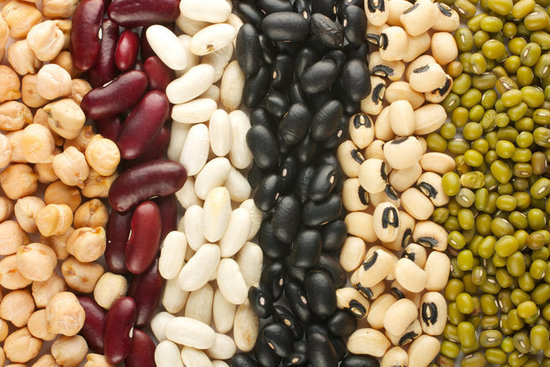Dr. Robin Buruchara, Director of the Pan-Africa Bean Research Alliance (PABRA), imagine what a world without beans would be like. PABRA, a network of researchers from 30 countries in Africa, supports national bean programmes and other members to enhance delivery of improved beans for Africa

I, like millions of others in Africa, can’t imagine what it would be like to live without beans. Venture onto any small farm in Uganda at meal time, and I can guarantee you that you will find beans on your plate.
Come to think of it, venture onto any smallholder farm, low income urban home or boarding school across Africa at meal time, and you are more likely than not to find beans or some kind of pulse on your plate.
And that’s despite the most severe drought that parts of the continent have seen in decades. Rains have been late or not come at all; water scarcity has devastated harvests, and incomes have been crippled.
Yet beans remain a staple in the African diet, for more reasons than one. They’re inexpensive and easy to grow, with seeds sourced from neighbours or family members. They’re nutritious: high in protein, fibre, carbohydrates, folic acid, iron and zinc.
Our studies in Rwanda, for instance, show eating iron-fortified beans can actually reverse anemia and iron deficiency.
They come in many shapes, sizes, colours and tastes. In many countries they a good source of income as they are easy to sell. And farmers know beans are a good bet to plant, because if most of their harvest fails and they can’t sell anything – at least they have some food at home.
That’s why the Pan-Africa Bean Research Alliance (PABRA), works with national bean programmes to strengthen cropping systems across 30 countries in Africa.
But growing more beans is not a panacea for tackling malnutrition, improving soil fertility and improving incomes. And, significant challenges block the road to improve production.
Despite the prominence of beans in the local diet and their versatility, the production and improvement of beans is not as high a priority in agricultural and nutritional policies as it ought to be. Their nutritional benefits are not incorporated into nutrition programmes; their ability to combat climate change and make farmers’ fields more resilient are not spelled out in climate policy.
It’s unlikely that farmers throughout sub-Saharan Africa – where nitrogen is a commonly lacking crop nutrient – know that beans and other pulses can be used as an alternative or complementary source of nitrogen. They convert atmospheric nitrogen into nutrients the plant can use, by-passing problems associated with excessive fertiliser use – including water and air pollution, not to mention cost.
They might not know which beans can be sold for a good income twice a year at the local market – especially important for women, who traditionally control earnings from the crop. They might not know which varieties can tackle anemia, or improve soil health.
They probably don’t know that beans use less water and energy compared to most other protein sources, and that they are also relatively drought resilient compared with other crops.
This needs to change. These are vital factors for farmers in Africa, who must prepare for more drought, longer dry seasons and shorter spells of unpredictable rainfall. Until our agricultural systems become fully irrigated, our farmers need more resilient crops, and beans are an excellent case in point.
In too many places, new bean varieties and agronomic packages don’t reach farmers or advisory services. To inform farm-scale decision making and agricultural policy, we need to spread the word about the full set of impacts that can be felt by integrating pulses into cropping systems.
It’s true: we do need more research into which beans fit within specific cropping systems.
Agronomic management is a central pillar of pulse production that relies on developing options suited to local contexts. Yield and environmental benefits of pulse production vary widely across agro-ecological contexts.
But already we have evidence to show the yield increases farmers can expect in their fields; the extra income they put into their pockets, and the huge nutritional benefits they can gain from eating beans.
What remains to be seen is how the private sector and public sector can work together to make sure better beans get to more people. To make sure farmers growing them can make more money from them; or feed their families more nutritious diets with them.
We’re tackling these challenges head on. And raising awareness about how exactly beans contribute to our welfare this Global Pulse Day, is among the many routes we can take to beat them.

Wow
..one my favourites, I took more bean than meat,I preferred getting my most needed nutrients from bean than life stocks.